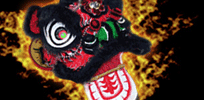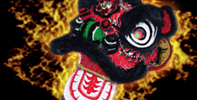|
You may ask if Tai Chi is the ultimate martial art system and philosophy, then why study Hsing I?
Tai Chi's complexity can be overwhelming to some beginners.
Hsing I has fewer movements with more variations and acts as a good stepping stone to Tai Chi.
Hsing I is referred to by many as a the link between external and internal arts
and maintains all the internal qualities of Tai Chi.
The Five Element based styles of Hsing I Chuan (Shan Xi and Hebei styles) traditionally
begin training with stance keeping, the holding of static postures for prolonged periods of time
(Zhan Zhuang). The most fundamental posture is called San Ti (Three bodies) or San Cai
(Three Powers - referring to heaven, earth, and man). It is from this posture that all of the
subsequent movements in the style are created, and most teachers place great emphasis upon its
practice.
After stance training, the student begins to learn the Five Element Fists
(Wu Xing Quan). These are the basic movements of the art and express all the
possible combinations of motion which produce martial power (including energy
which moves downward, upward, forward, outward, and inward).
After a certain level of proficiency is acquired in the practice of the
Five Element Fists, the student goes on to learn the Twelve Animal and linked forms.
The Twelve Animal forms are variations of the energies of the Five Elements
expressed through the format of the spirit of animals in combat.
There are several two-person combat forms that teach the student the correct
methods of attack and defense and the applications of the techniques practiced
in the solo forms. Five Element based styles also include weapons training.
Unlike its sister art, Tai Chi Chuan, Hsing I Chuan or "Shape the Mind Boxing",
based upon the five elements and twelve animals, is very aggressive
in appearance and performance. It is based on an ancient theory of the
five elements or Wu-Hsing. The five elements (Earth, Metal, Water, Wood, and Fire)
are executed in a constructive and destructive cycle.
According to the principles of this style, attacking with clear intent
serves as the best defense. Attack and defense occur simultaneously.
Action and movement are tight and compact, limiting any openings for counterattack.
Hsing I Chuan focuses on the repetitive practice of single movements
that are later combined into more complicated, linked forms.
A familiar adage of Hsing I is that
"the hands do not leave the (area of the) heart,
and the elbows do not leave the ribs."
There are kicks in the style, but the kicks are low and direct.
Great emphasis is placed upon the ability to generate power
with the whole body and focus it into one pulse, which is released in a sudden burst.
|



 Wednesday, January 7
Wednesday, January 7  Site Intro
Site Intro Guest Book
Guest Book Contact Us
Contact Us Mailing List
Mailing List Testimonials
Testimonials Coupons
Coupons School Location
School Location Class Schedule
Class Schedule Tien Shan Pai Curriculum
Tien Shan Pai Curriculum Wing Chun Curriculum
Wing Chun Curriculum Tai Chi Chuan Curriculum
Tai Chi Chuan Curriculum Seminars
Seminars Event Calendar
Event Calendar News
News Articles
Articles Photo Gallery
Photo Gallery Products
Products Chinese Terminology
Chinese Terminology FAQ
FAQ




